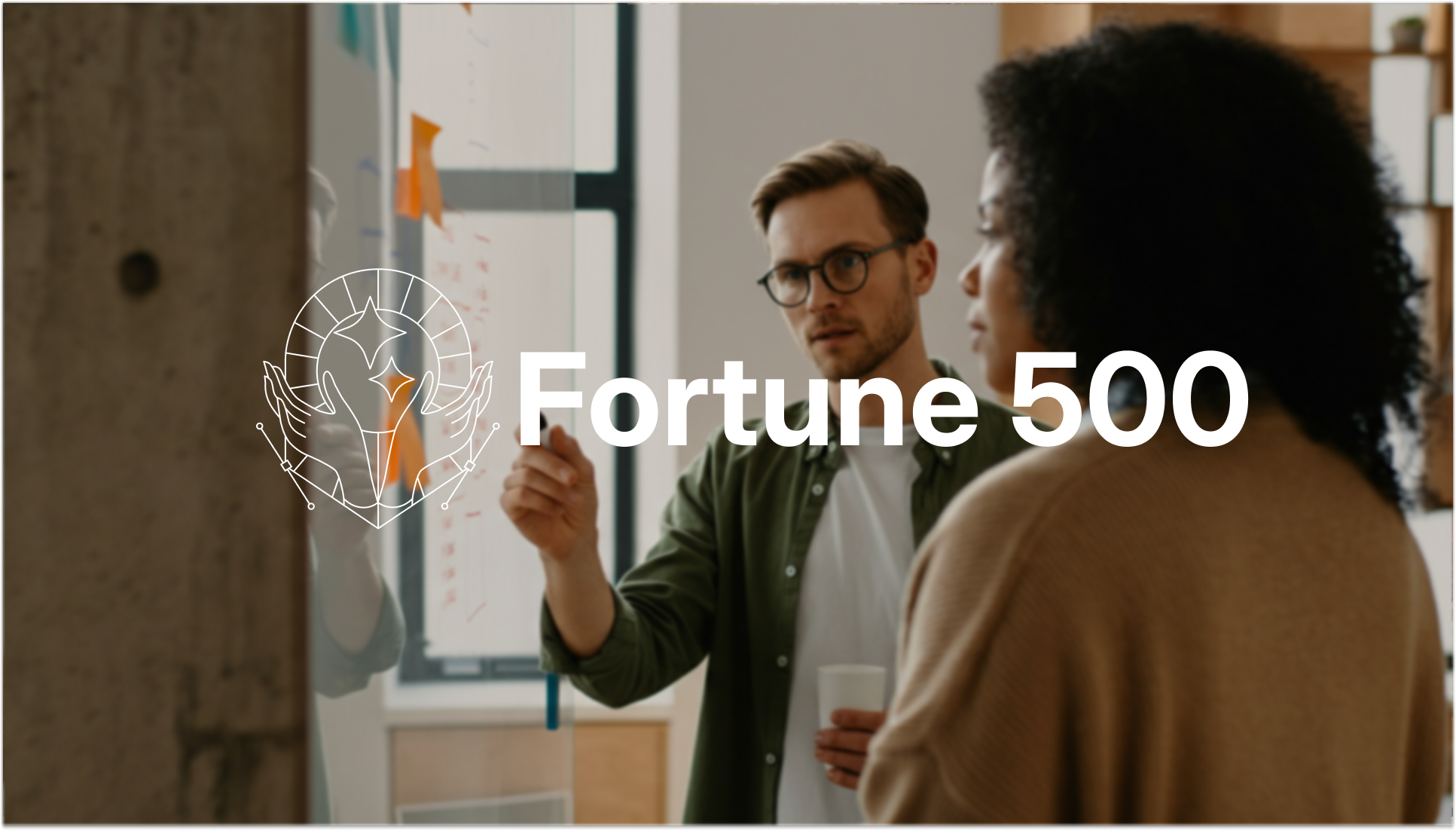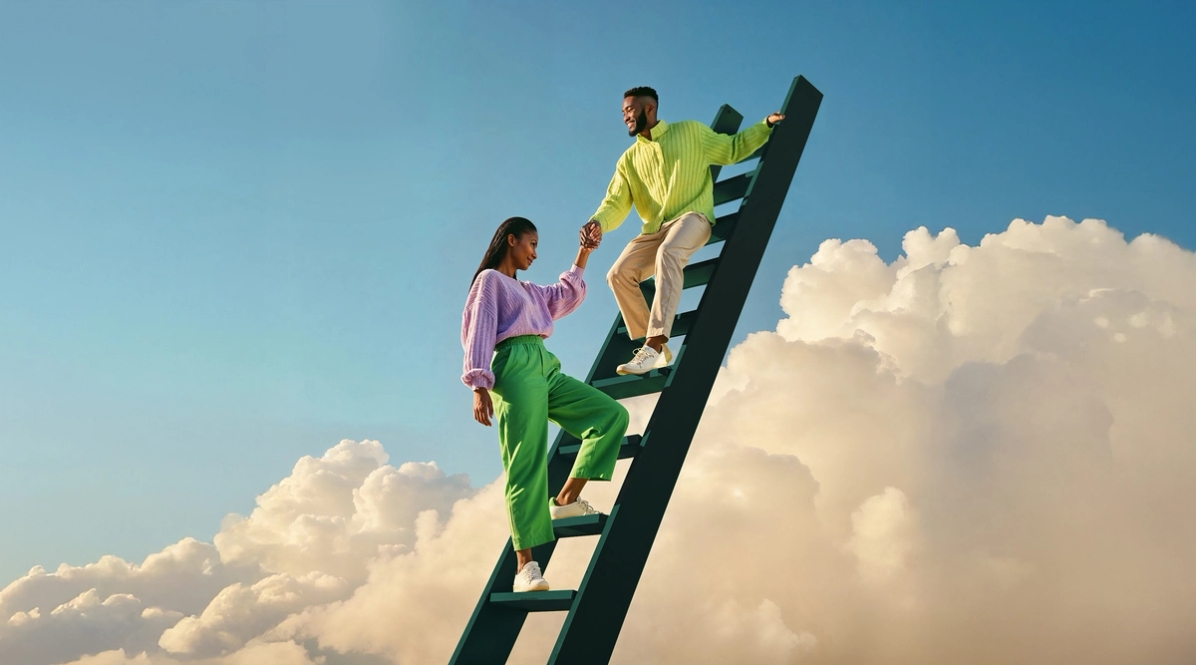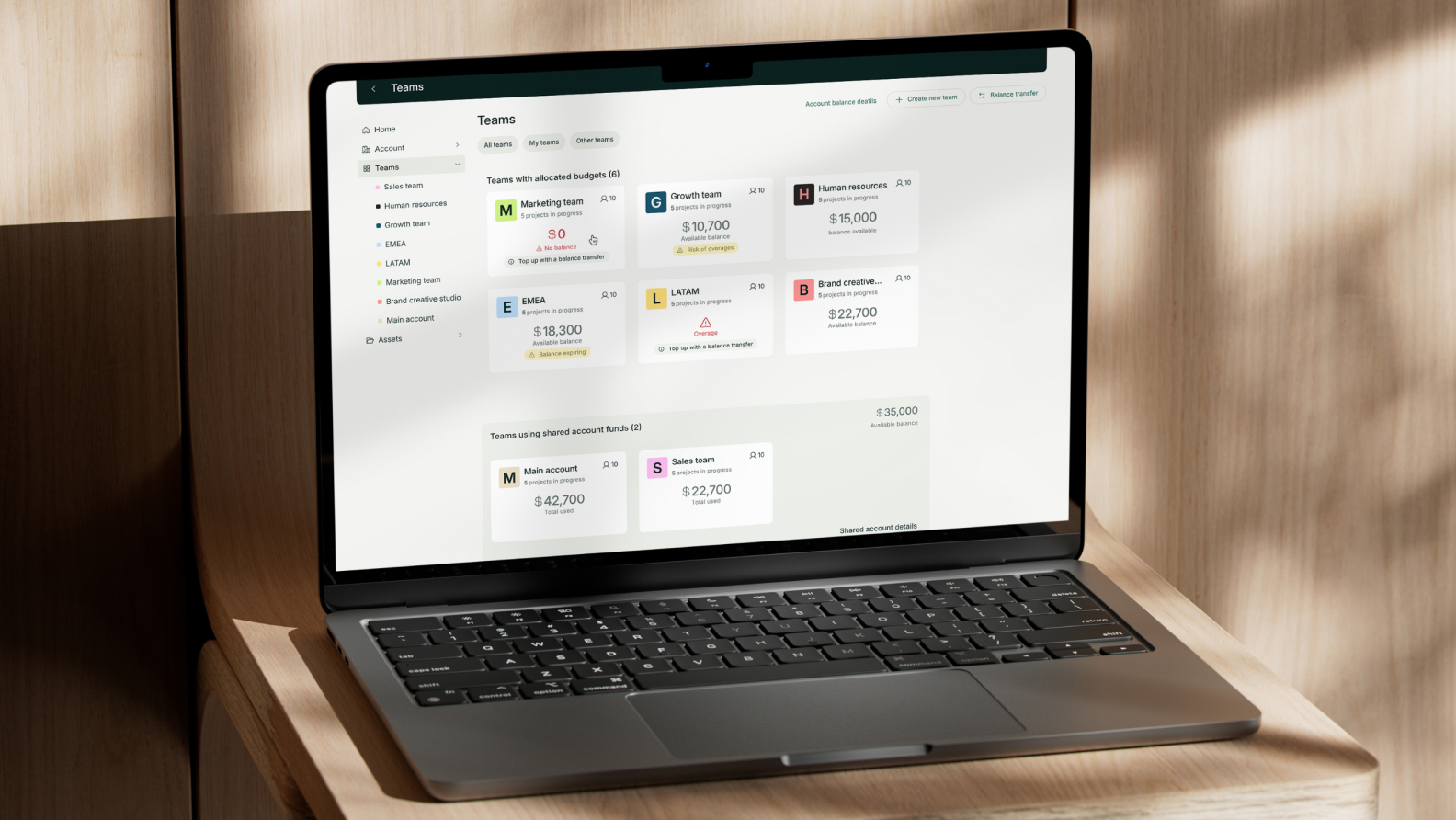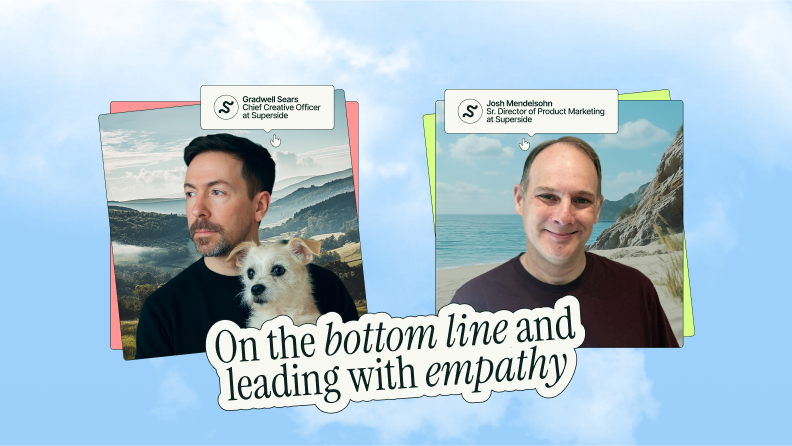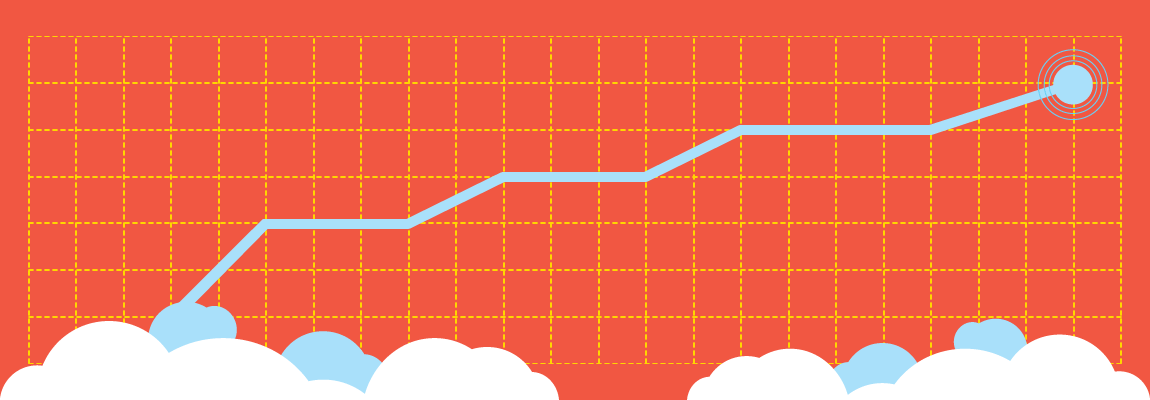
AI is a force multiplier. But rest assured, the force being multiplied is humanity. That is, if you're doing it right. From agile adoption to custom models, find out how Superside's experts wield AI to elevate creativity—all while centering humanity.
Will it look too “AI-y?” Will it sound too “AI-y?”
When it comes to AI, many creatives and marketers share a common concern: Will it compromise the quality of their work?
In our latest guide, Inside Great Creative Partnerships, Superside’s Phillip Maggs, Director of AI Excellence, and Monica Romaniuc, Senior Product Marketing Manager, confirmed this fear is unfounded—provided you’re doing it right. From quick tips to caveats, they shared:
- Where AI can provide value across creative and marketing workflows
- Why legacy stacks are a caveat (but not a lost cause)
- How agility, customization and curation are key for quality
- How empowering exploration can unlock new levels of creativity
When used thoughtfully, AI doesn’t just maintain quality—it can push your creative to new heights. Let’s see how.
AI's expanding role across creative and marketing workflows
A year ago, AI’s primary value was in exploration: The expansion of possibilities we touched on when we spoke about ideation. Whether you’re a marketer using a large language model (LLM) to iterate upon an idea or a creative using an image model to find inspiration, that value still stands.
But now, these tools excel across marketing and creative workflows, providing value from ideation through to production.
If you asked me how AI elevates creative work a year ago, it would’ve been in exploration. In broadening horizons. The maturity of the tools and people using them was towards the front end of the process. Now, we’ve come nearly 180.

Romaniuc concurs. “It adds so much value across every single stage,” she said. From deep research to custom models, AI tools and features have advanced lightyears in just 12 months.
In the conversation about quality, these advances mean everything. They mean you can move faster, scale with ease, layer in expertise, and ultimately, spend more time on the quality of your ideas and strategies rather than executing endlessly. “You should be spending 80% of your time on the quality of the idea because you should be able to produce in 20% of the time,” said Maggs.
The creative caveat: Legacy stacks
Just because a tool is useful across workflows, doesn’t mean you’re able to use it. Maggs pointed out that integrating AI into creative workflows presents a challenge at many Fortune 500 companies where legacy stacks are hard to break out of. Given these dependencies combined with slow-moving approval chains, legal considerations and general misgivings, it’s not surprising only two percent of creative teams have fully integrated AI into their workflows.
That said, Maggs sees the tides changing. As we’ve touched on, 96% of creative leaders believe AI will help creative teams move more quickly and 93% believe it will improve quality. Meanwhile, Maggs revealed that many of Superside’s largest customers are starting to ask about upskilling their creative teams on AI.
Given this inside track, he predicts the creative + AI model will become ubiquitous in the next three years. There may be more layers at an enterprise, but leaders are aware of the opportunity and loath to be left behind. So, how can you ensure you’re not only taking advantage of these tools, but hitting the highest level of quality they enable?
The quality trifecta: Agility, customization and curation
Another thing Maggs and Romaniuc agree on: In the AI era, agility is key.
When asked how to ensure quality while using AI to deliver creative faster and at scale, Maggs’ number one piece of advice was not to get too attached to any single tool. As he explained, “We’ve never lived through a time where there are so many companies and startups and developers focusing on creative tooling ever.” And that means it’s not just possible a better tool or model will come out every couple months, it’s a certainty. Romaniuc seconded this point, sharing that she’s always switching tools depending on the latest releases and updates.
You just have to be very comfortable with switching a lot to be able to maintain quality. Saying okay, here’s my quality benchmark, and I will just stick with this for the next three years with this tooling, training and enablement won’t cut it.

Of course, in the conversation about enterprise stacks, this type of agility can be a challenge. That’s why more and more enterprises are turning to flexible creative partners, like Superside, to act as an extension of their in-house team and stay on the cutting edge of these tools, as well as develop and manage custom models aligned to their brand.
Which brings us to Maggs’ second point: Rely on the parts of AI that are very good at maintaining consistency and quality.
Specifically, Maggs was referring to custom AI image models. Trained and fine-tuned on your assets, these models allow designers to produce usable, on-brand visuals right away, rather than generating thousands of assets only to land on a few worth refinement. Maggs and his team are now offering Custom AI Image Models to customers as a service, speeding up image generation by 10X, which translates to 85% cost savings per image.
But the real magic of these models is their ability to understand your brand, enabling not just scale, but quality and consistency at scale.
Romaniuc also advocated for the use of custom models, speaking to the text side of the equation. On Superside’s product marketing team, they’ve built a Custom GPT that draws on finalized positioning docs, brand guidelines, style docs, personas and vetted research. By using this GPT across teams, they ensure consistency in everything from strategic assumptions to key statistics and brand tone.
We always know it's pulling from the right things, whether it's our persona information or our positioning docs. We know it's always grounding things in that information, which helps with that first level of quality control. Then we add our experts on top of that as well.

The last point on achieving quality with AI is all about that expert level: How and when humans should interact with these tools.
At the beginning of the process, that differs for creatives and marketers. In Romaniuc’s line of work, fact-checking the sources, statistics and statements AI generates is essential from step one. Building a whole strategy based on a flawed statement or confabulated fact wouldn’t lend itself to quality… or efficiency.
But in the creative process, Maggs actually cautions against overrefinement in early stages. As he explained, AI helps you make loads of options quickly, but you shouldn’t expect them to be better than 90% to start and spending time refining them at the point of review is, well, pointless. Simply put, curate first, refine later.
You should know you can get it from 90 to a 100%, but you should only do that on the nine things you’re going to publish, not on the 881 other things. Getting quality is always possible, but you need to know when to bring the hammer down and when to let exploration and diversity of creation live.

The time for creatives to make things perfect comes in post-production—and that’s true for marketers, too. As we touched on, Romaniuc always gets subject matter expert and stakeholder eyes on her output to ensure her fact-checking and assumptions are sound. That interplay between human and AI with experts curating, refining and making final calls is central to achieving brand-informed, high-quality outcomes.
Dream big and empower exploration
AI gives us time to dream bigger and expands possibilities for the better.
Rather than default to fear or apprehension, Maggs and Romaniuc encourage their peers to see AI for what it is: A force multiplier. But rest assured, the force being multiplied is humanity.
At least, if you’re following a similar creative or marketing model as Maggs and Romaniuc at Superside where AI is a tool in their stack, not a replacement for any one person. And that’s the right model for raising the bar—because AI can’t reach the standard on its own, but in collaboration with a human, it can elevate work above what we achieve on our own.
The moral of the story: Don’t over rely on AI, but don’t dismiss these tools either. As Maggs explained, both extremes lead to bad places. Instead, he encourages leaders to:
Empower your best creative brains and give them the psychological safety to go out there and try these new things. Maybe, in the early days it’s not going to be up to your standards, but keep pushing through that pain barrier, and you’ll create an environment where creatives can explore and exploit this amazing new thing and feel good about it, which isn’t trivial.

Raising the bar hand in hand with the bots
As Superside’s experts showed, the real power of AI lies in how it’s used. Wield it with intention, agility and oversight—and it may take some humility to admit, but the results will surpass what you could accomplish on your own.
For more insights on partnering up with AI—and your fellow creatives and marketers—be sure to check out our full guide, Inside Great Creative Partnerships.





